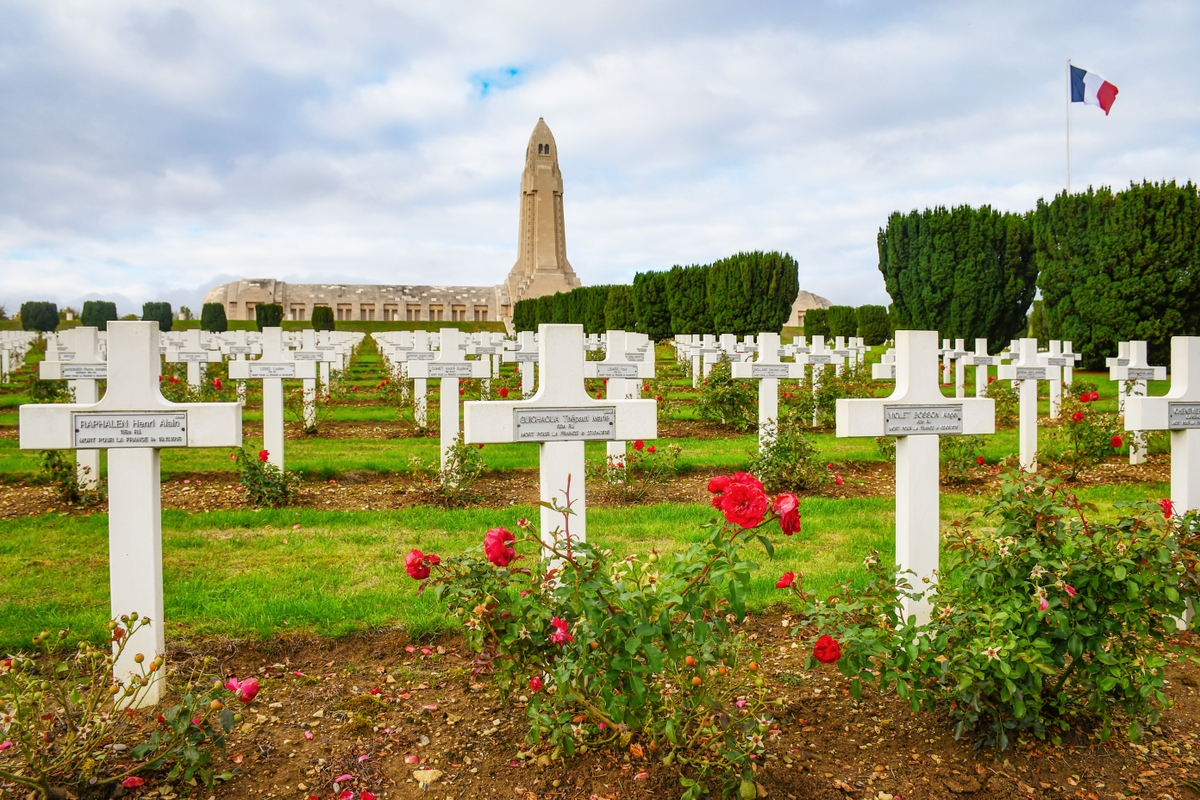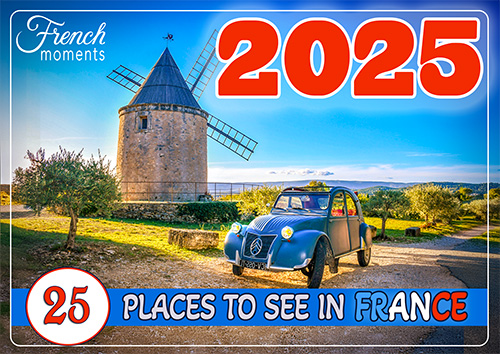A few days before the Armistice of November 11, 1918, I propose you discover a place of memory in Lorraine: the Douaumont Ossuary.
Located a few kilometres from Verdun, the monument evokes the memory of the soldiers of the terrible battle of Verdun in 1916.
More than a hundred years later, Verdun cannot be forgotten!
Verdun: Lest We Forget!
The name Verdun evokes for me the memory of these First World War veterans who came to my elementary school to tell about their war memories.
![Les Poilus [Public Domain]](https://frenchmoments.eu/wp-content/uploads/2021/10/Poilu-WWI.jpg)
The old men in their eighties were, at the time, the last surviving Poilus* in France…
And I wondered what would happen to the memory of the First World War and the battle of Verdun after their disappearance.
*Poilu refers to the French soldiers who fought during the First World War.
A memory still very much alive
It is clear that Verdun’s memory is still very much alive today.
A century has passed since the Great War, and the traces of the fighting that took place in Verdun have not yet completely disappeared.
The terrain is still disturbed, and, in some areas, the vegetation has not completely reclaimed its rights.
Moreover, the land that is no longer suitable for cultivation has been reforested.
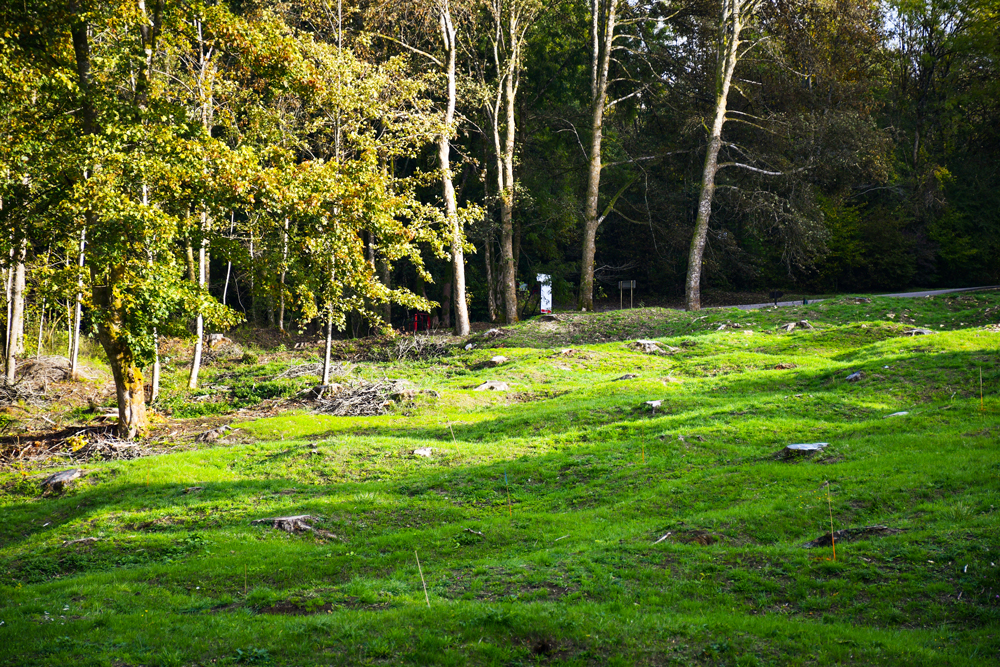
The memory was recently maintained by the large-scale media tributes commemorating the 100th anniversary of the war (2014-2018).
Tour buses still fill the parking lots of the memorial sites in Verdun and northern France.
The French have also kept November 11 as a public holiday in the national calendar.
Why visit Verdun?
And yet, I have long hesitated to discover the sites of the Battle of Verdun.
Maybe because these places carry a strong emotional charge… and then, personally, I am more attracted by beautiful monuments and magnificent landscapes and not by cemeteries!
But last year, I had the opportunity to go to Verdun. And I agreed to go there.
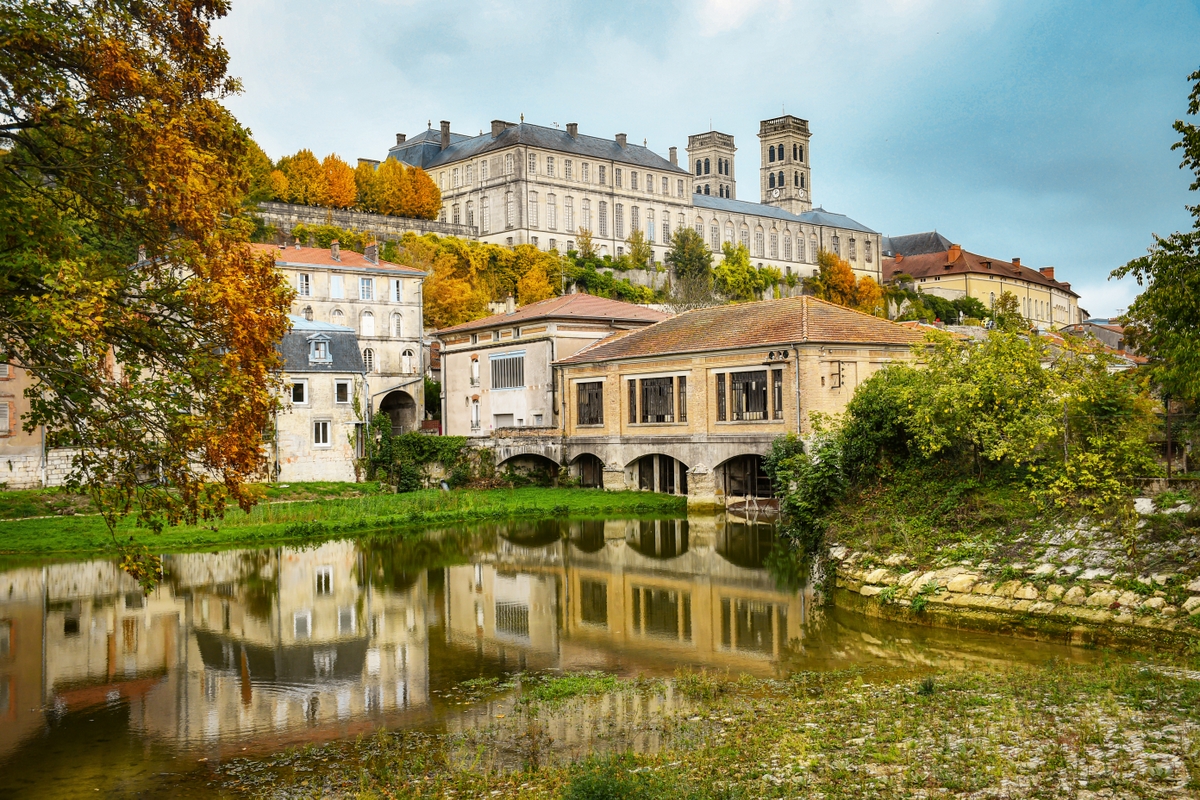
Once there, I had an appointment with this dark period of French history.
Yes, I will remember Verdun for the rest of my life!
The History of the Douaumont Ossuary
The ominous building of the ossuary was built in memory of the 300,000 French soldiers who fell in the defence of Verdun.
It was intended to gather all the bones collected on the various sectors of this battlefield.
To this end, it houses the unidentified remains of approximately 130,000 French and German soldiers who fell during the battle.
A bishop at the origin of the project
As a reminder, the Battle of Verdun occurred from February 21 to December 19, 1916.
There were 700,000 French and German victims, including 300,000 dead.
The armistice ending the Great War was signed by the belligerents on November 11, 1918, in the clearing of Rethondes in the forest of Compiègne.
In the aftermath of the war, the bishop of Verdun, Mgr Charles Ginisty (1864-1946), proposed building an ossuary.

The Catholic prelate had walked the battlefield littered with corpses and wished to give a decent burial to the soldiers and allow their families to gather.
In February 1919, the third anniversary of the Battle of Verdun was commemorated at the Trocadero in Paris.
This was the occasion for Mgr Ginisty to officially suggest his project for the Douaumont Ossuary, referred to as the “Cathedral of the Dead and Basilica of Victory“.
Marshal Ferdinand Foch, President Raymond Poincaré, and MP Victor Schleiter were among the great names who supported the project at the time.
Marshal Philippe Pétain, nicknamed the “Victor of Verdun,” was also appointed honorary president of the realization committee.
International financing of the project!
In 1919, a plank barrack was built on the Douaumont site.
It was a temporary ossuary, the time to collect the funds needed to build the monument.
![The temporary ossuary of Douaumont [Public Domain]](https://frenchmoments.eu/wp-content/uploads/2021/10/Ossuaire-provisoire-de-Douaumont.jpg)
Bishop Ginisty and his committee began to look for the necessary funds to build the future monument.
To do so, the bishop of Verdun surveyed France and travelled abroad from 1919 to 1932.
He was successful, as 122 French cities and 18 foreign cities pledged donations, including Canada in 1925 and the United States in 1928.
The façade of the memorial contains the coats of arms of the cities that contributed to its financing.
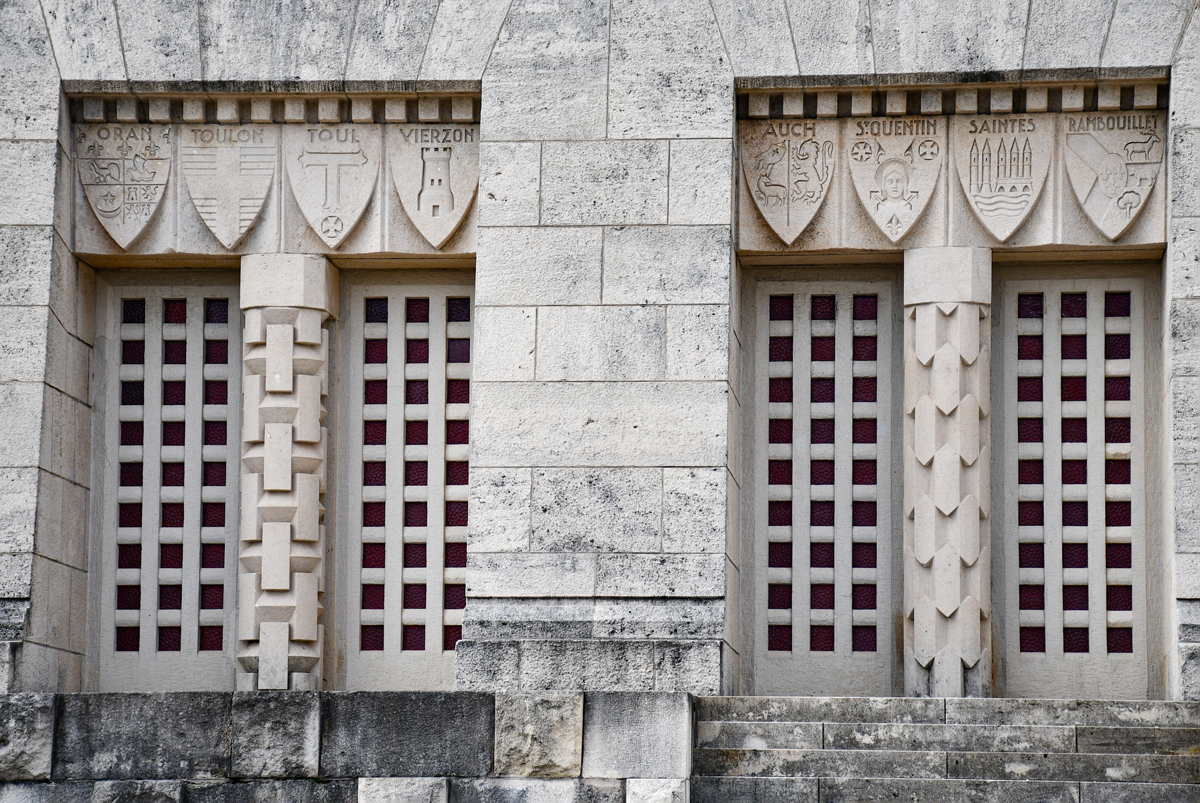
An architectural competition was held to design the final monument. In 1923, a trio of architects—Léon Azéma (First Grand Prix de Rome 1921), Max Edrei, and Jacques Hardy—won the project.
12 years to build the ossuary
On August 22, 1920, Marshal Pétain and Bishop Ginisty laid the first two stones.
Then, on September 17, 1927, 52 coffins corresponding to the sectors of the battle of Verdun were transferred from the temporary ossuary to the large ossuary still under construction.
Finally, the Douaumont Ossuary was inaugurated on August 7, 1932, in the presence of the President of the Republic, Albert Lebrun and many French and foreign dignitaries, veterans, and families of missing soldiers.
To this day, the Douaumont Ossuary is the most important French monument erected in memory of the 1914-1918 war.
A symbol of Franco-German friendship
On September 22, 1984, the Douaumont Ossuary was the scene of a historic moment and emblematic of Franco-German reconciliation: François Mitterrand and Helmut Kohl holding hands.
In front of the ossuary, the French President and the German Chancellor held hands during a tribute to the fallen soldiers of the First World War.
On the same day, a hundred young French and Germans planted sycamore maples to symbolise the friendship between the two countries.
30 years later, on February 9, 2014, the name of a German soldier, Peter Freundl, was added for the first time to those of French soldiers engraved on the vault of the ossuary.
The 90th anniversary of the Armistice of 1918
On November 11, 2008, the ossuary hosted the commemorations of the 90th anniversary of the 1918 Armistice.
Many political personalities were present:
- the French President Nicolas Sarkozy,
- the president of the German Bundesrat, Peter Müller,
- Prince Charles of England and his wife, Camilla,
- Grand Duke Henri of Luxembourg and his wife María,
- the President of the European Commission José Manuel Durão Barroso, and
- President of the European Parliament Hans-Gert Pöttering.
For the first time, the ceremony was held without a French survivor of the First World War (Lazare Ponticelli, the last soldier, died a few months earlier, on March 12, 2008, at the age of 110 years and 96 days).
In 2016, François Hollande and Angela Merkel took part in commemorating the Centenary of the Battle of Verdun at Douaumont.
Visit of the Douaumont Ossuary
After visiting the old town of Verdun and its beautiful cathedral, we headed to the Douaumont Ossuary.
This one is located at the boundary of the communes of Fleury-devant-Douaumont and Douaumont-Vaux.
When you arrive at the site by the D913, you can see the Tour des Morts (tower of the Dead) perched on the top of a hill.
The parking lot is located around the back of the building.
As you drive around the monument, you will see bones through glass windows from the outside.
These are the remains of thousands of unidentified soldiers.
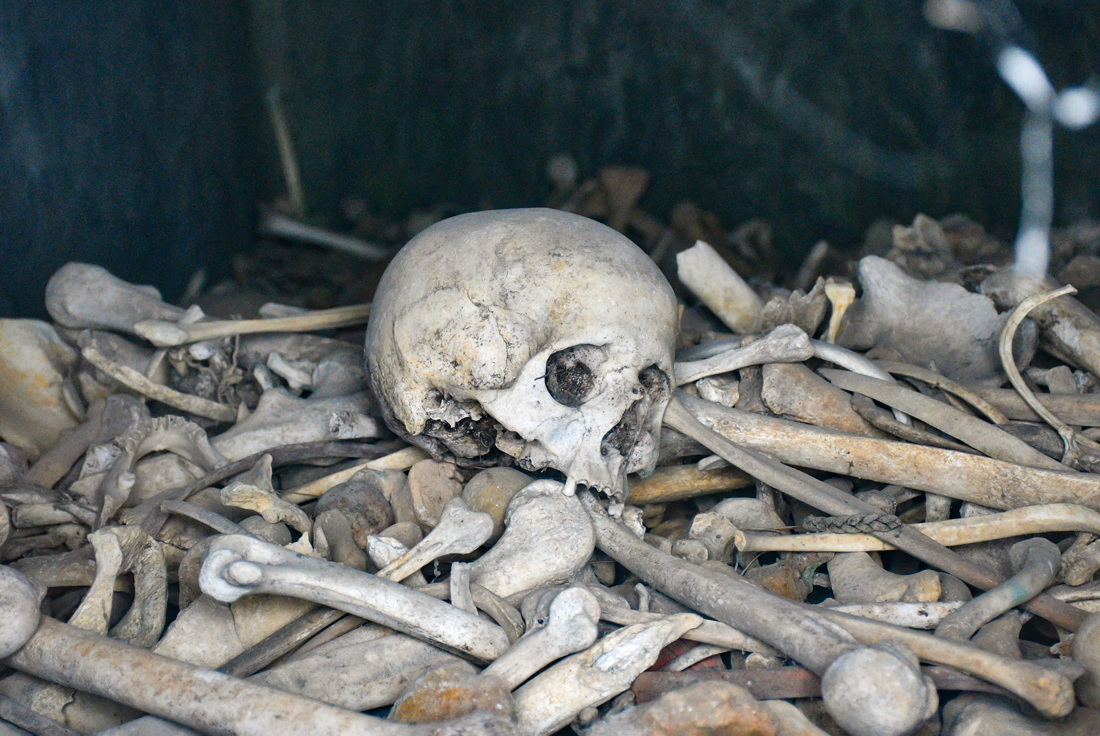
The façade of the ossuary
The monument is inspired by Romanesque art.

On the façade of the monument, you can see the coats of arms of the cities that financed its construction.
The large bronze door is decorated with a sword and two palms on either side.
Above it is the word “PAX” (“peace” in Latin).
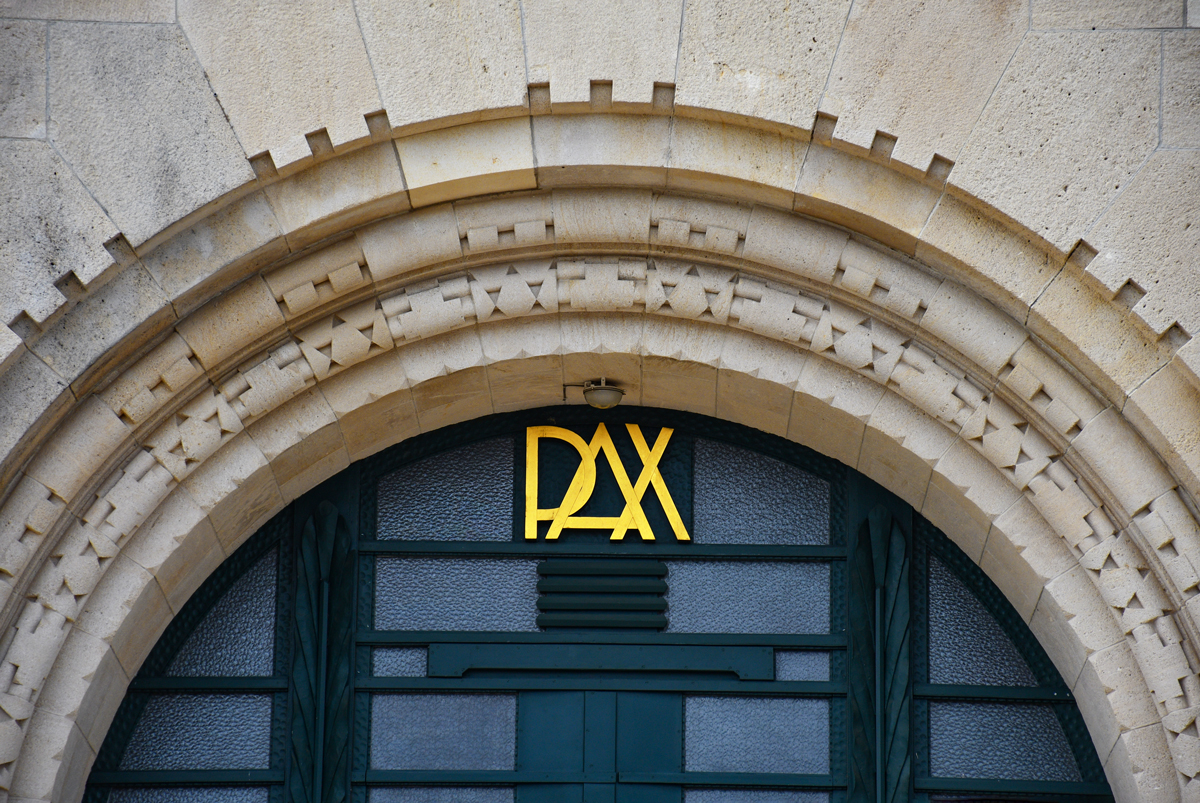
The transverse gallery
This vast monument includes a transverse gallery 137 meters long known as the cloister.
The 18 bays contain two sarcophagi of pink granite from Perros-Guirec in Brittany.
![The gallery of the Douaumont Ossuary © Zairon - licence [CC BY-SA 4.0] from Wikimedia Commons](https://frenchmoments.eu/wp-content/uploads/2021/10/Douaumont-Ossuaire-©-Zairon-licence-CC-BY-SA-4.0-from-Wikimedia-Commons.jpg)
On each side, the gallery ends with an apse containing five tombs.
The chapel
Under the monument’s central vault is the Catholic chapel.
Here, the Bishop of Verdun, Mgr Ginisty, who initiated the ossuary project at Douaumont, is buried.
![The chapel of the Douaumont Ossuary © Zairon - licence [CC BY-SA 4.0] from Wikimedia Commons](https://frenchmoments.eu/wp-content/uploads/2021/10/Douaumont-Ossuaire-Chapelle-©-Zairon-licence-CC-BY-SA-4.0-from-Wikimedia-Commons.jpg)
George Desvallières designed the stained glass windows of the memorial.
The Tower of the Dead
In the centre of the building stands the Tower of the Dead, 46 m (151 ft) high.
It is shaped like a shell and serves as a lookout.
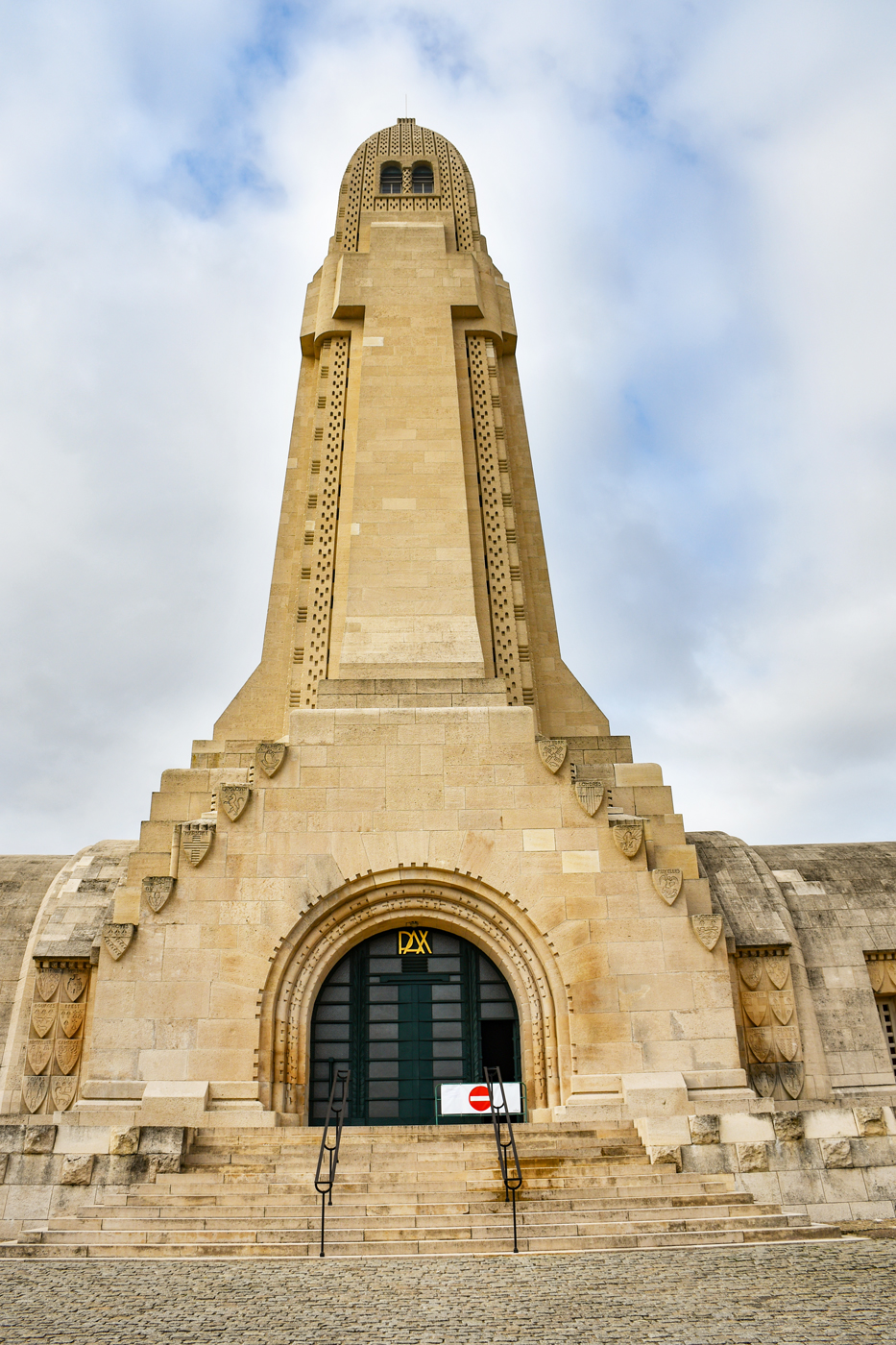
Each of its four sides contains a cross.
These four cardinal stone points symbolize the universality of the war drama.
A small war museum has been set up on the tower’s first floor.
At the top (204 steps), you will discover a general view of the site through the windows.
Orientation tables allow you to identify the different sectors of the battlefield.
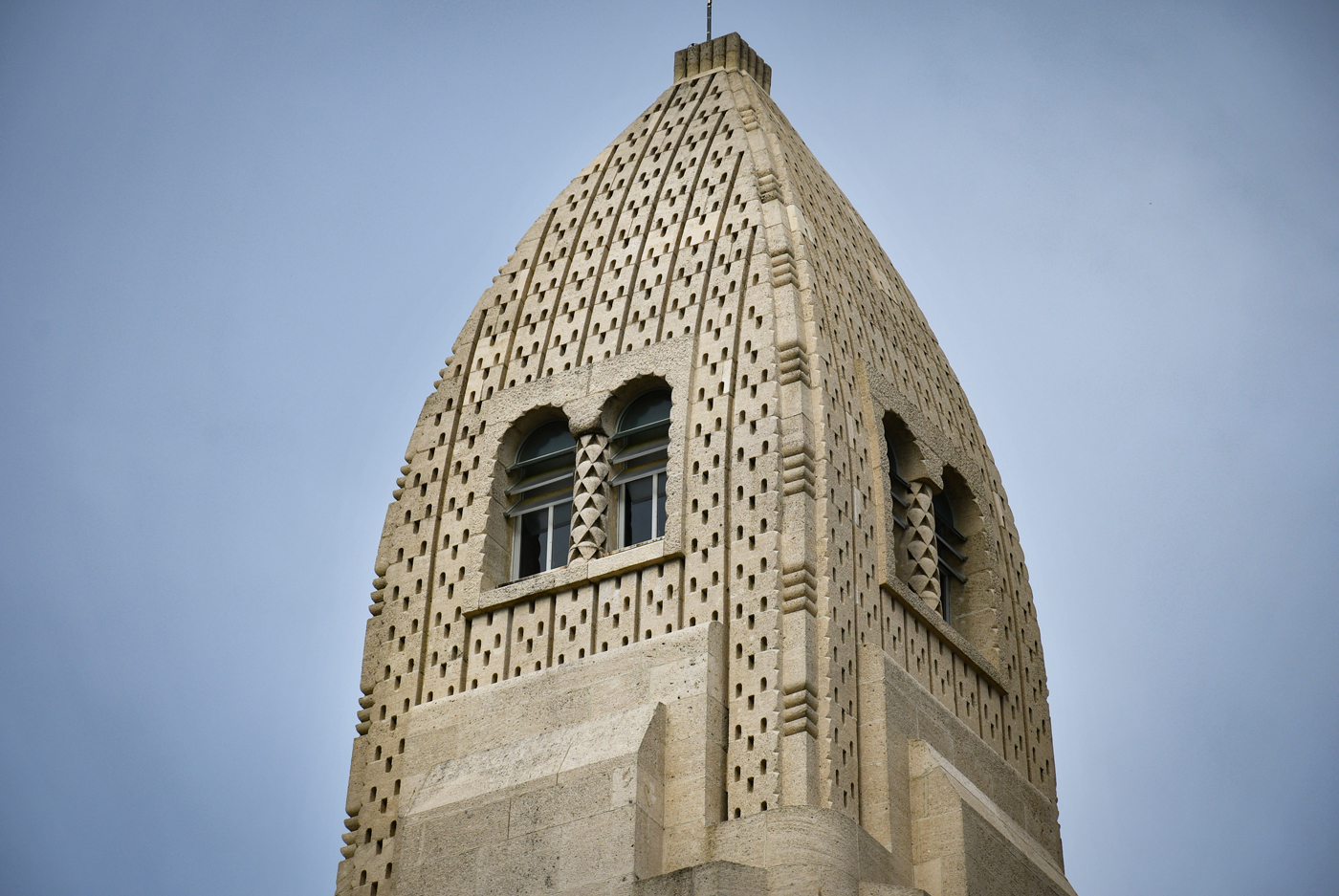
Louise Anne Charlotte is the name of the 2042 kg bronze bell.
Cast in 1927 in Orleans, it is one of the largest in the Meuse department.
The bell’s procession, from Paris to Douaumont, passed through Meaux, Soissons, Reims, Nancy, Metz, Saint-Mihiel, and Verdun.
Finally, the tower also serves as a lantern for the dead. From the top, four rotating lights, alternately white and red, illuminate the battlefield.
The national necropolis of Douaumont
Opposite the ossuary, the national necropolis of Douaumont gathers 16,142 graves of French soldiers.
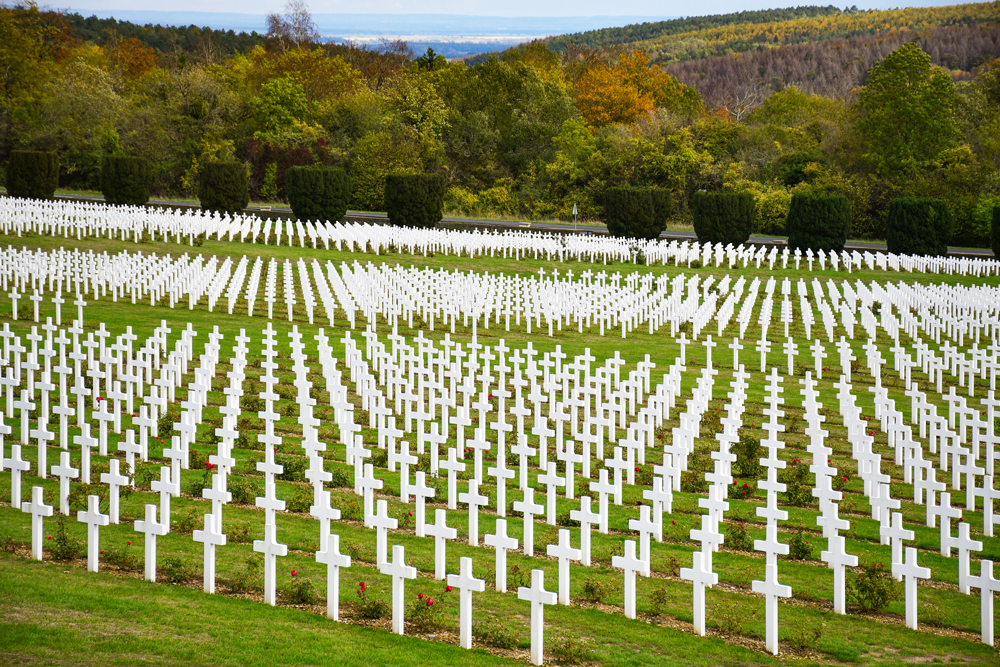
This national cemetery was created in 1923.
It covers 14.438 hectares and is part of the territory of the commune of Fleury-devant-Douaumont.
The national necropolis was inaugurated on June 23, 1929, in the presence of the President of the Republic, Gaston Doumergue.
16,142 graves of French soldiers
The military cemetery contains 16,142 graves of French soldiers, mostly Catholics, including six from the Second World War.
The individual graves are aligned in rows that reconstitute the alignment of an army.
The vast majority of the graves are Christian.
They take the form of a white Latin cross.
A red rosebush precedes each grave, adding a touch of bright colour and contrast to the cross’s white.
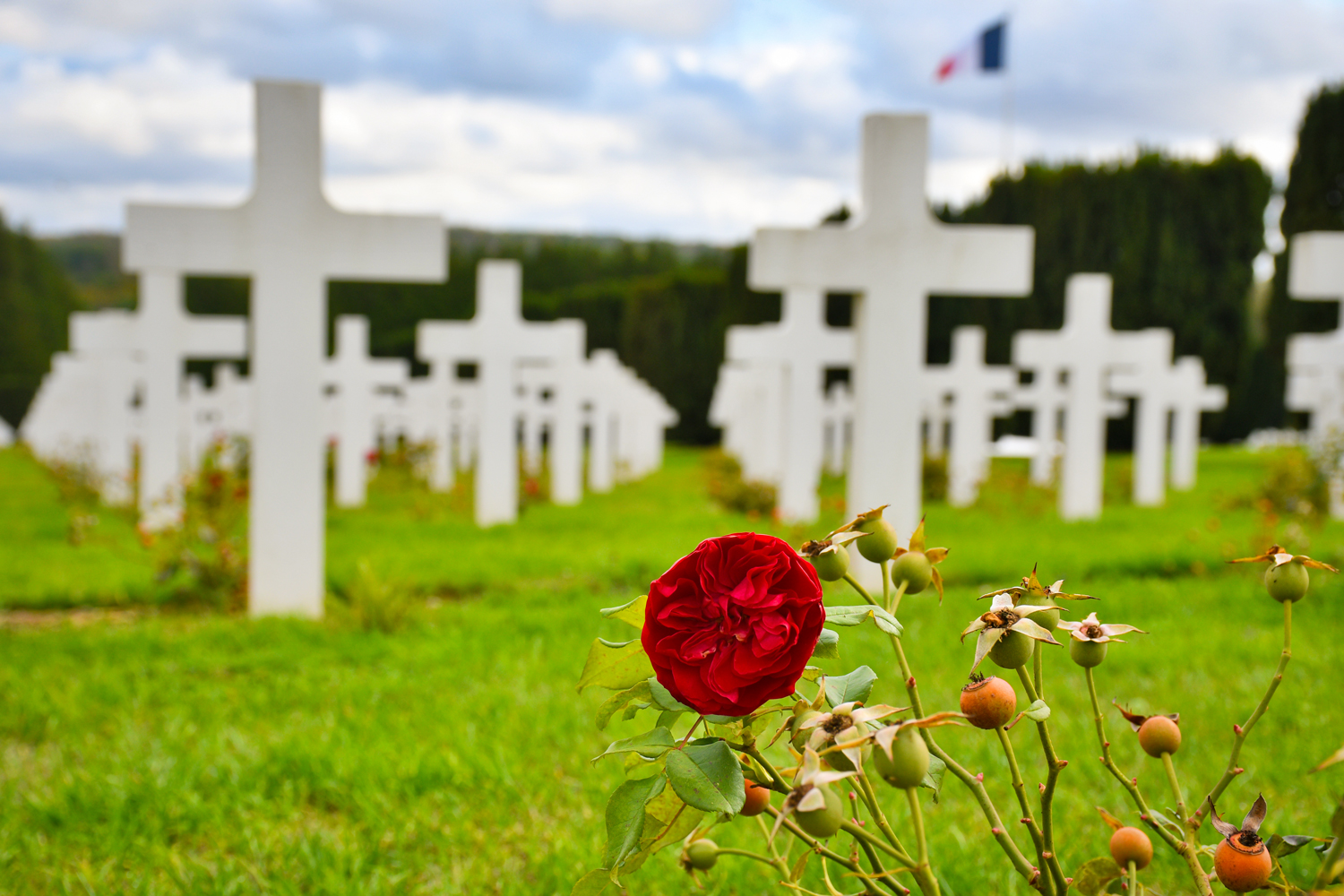
In the centre of the necropolis stands a flagpole that permanently bears the Tricolour, the national flag of France.
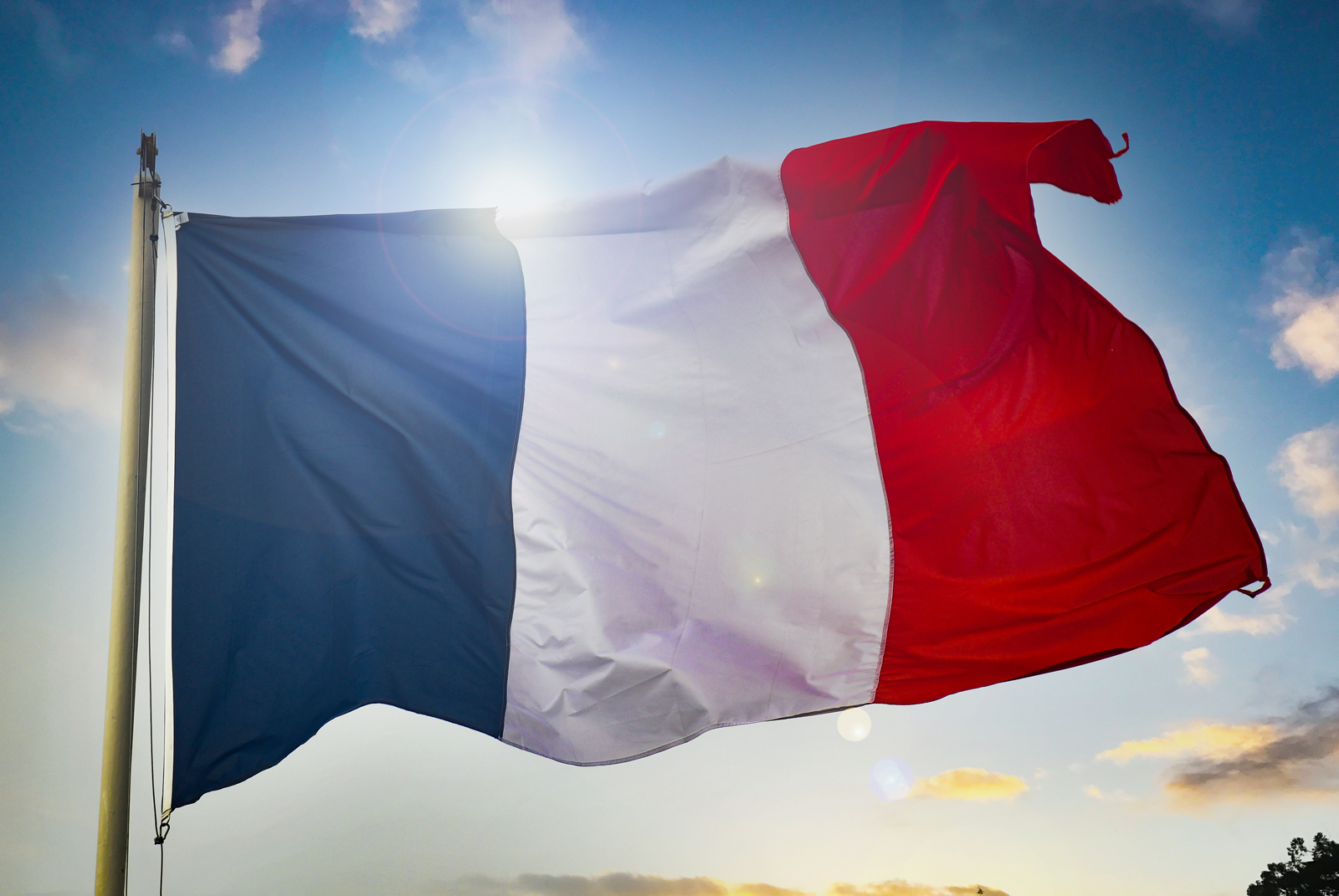
The necropolis also includes a square of 592 headstones of Muslim soldiers.
The star and the crescent can be recognized above the inscription “ci-gît” (here lies) in Arabic.
The two memorials to Jewish and Muslim soldiers
The necropolis shelters two memorials dedicated respectively to the soldiers of Jewish and Muslim confessions.
Since its inauguration in June 2006 by President Jacques Chirac, the Muslim memorial has been located to the east of the cemetery.
It consists of a 25-meter-long white stone ambulatory in Islamic style with a kubba.
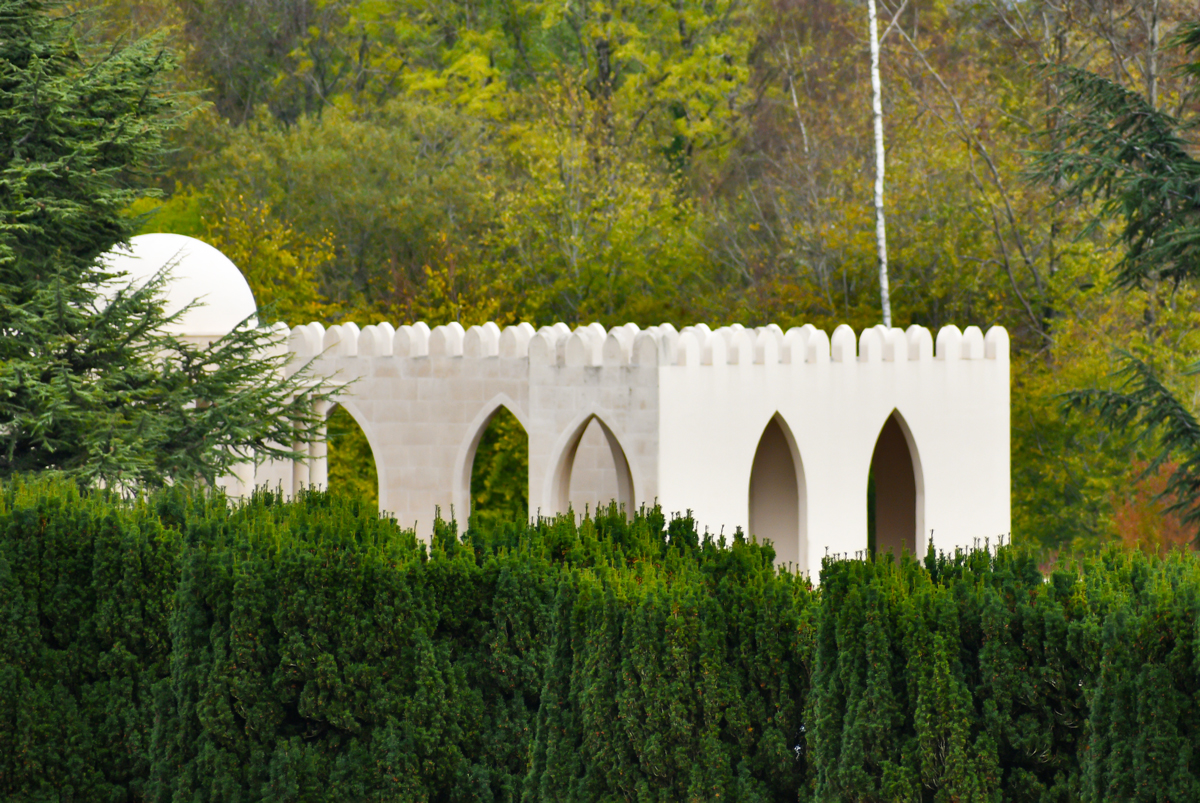
To the west of the cemetery is the monument dedicated to soldiers of the Jewish faith.
Built in 1938, it is decorated with the Tables of the Law engraved with Hebrew letters.
Find out more about the Ossuary of Douaumont
Reference sites
- Read this article in French on our blog Mon Grand-Est [from the 1st November 2021!!]
- The official website of the ossuary
- The Douaumont Ossuary on Wikipedia
- Where to stay in Verdun: here is a list of accommodations in the Verdun area!
A pin for Pinterest
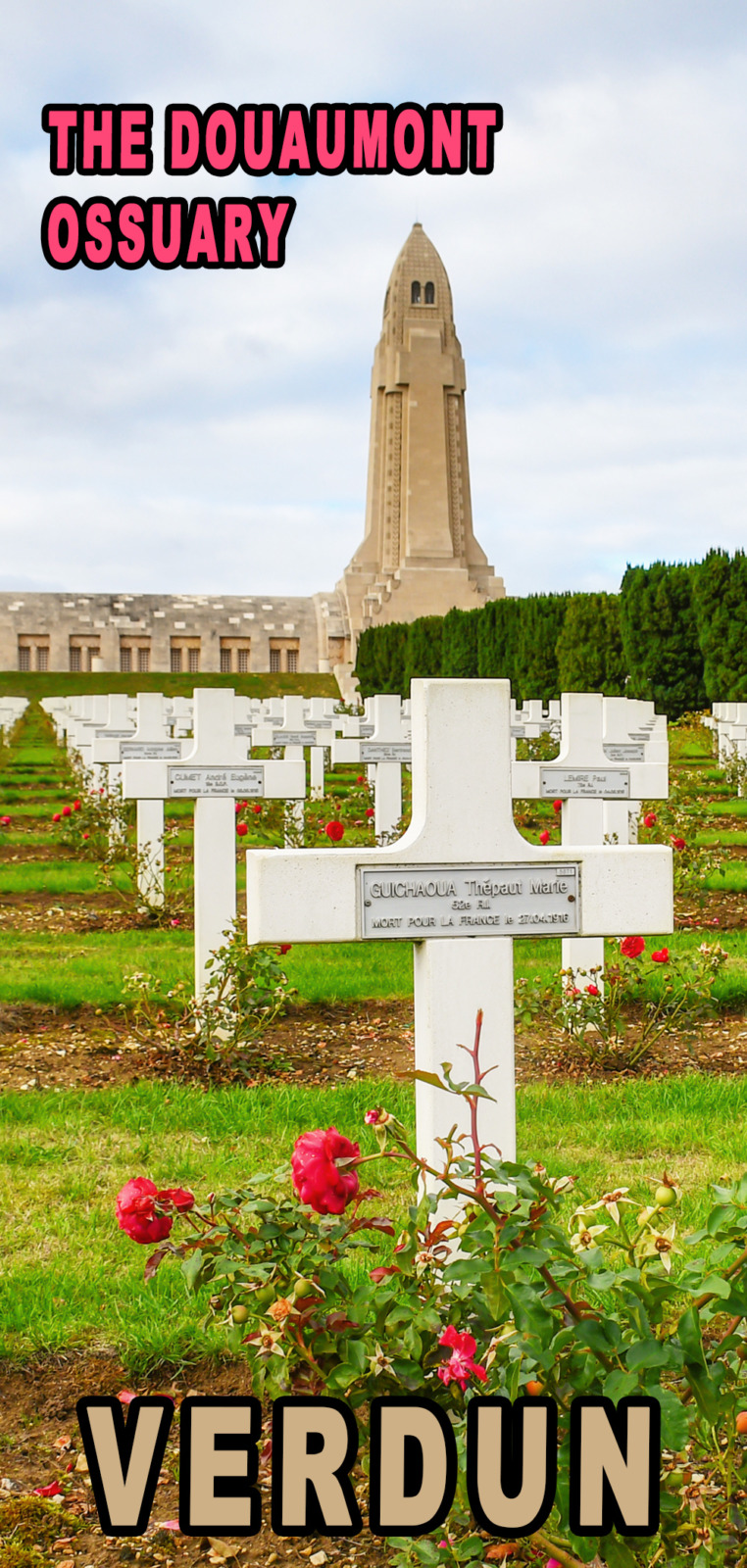
Do you know of other must-see ossuaries or necropolises in France? Tell me about them in the comments below 🙂

